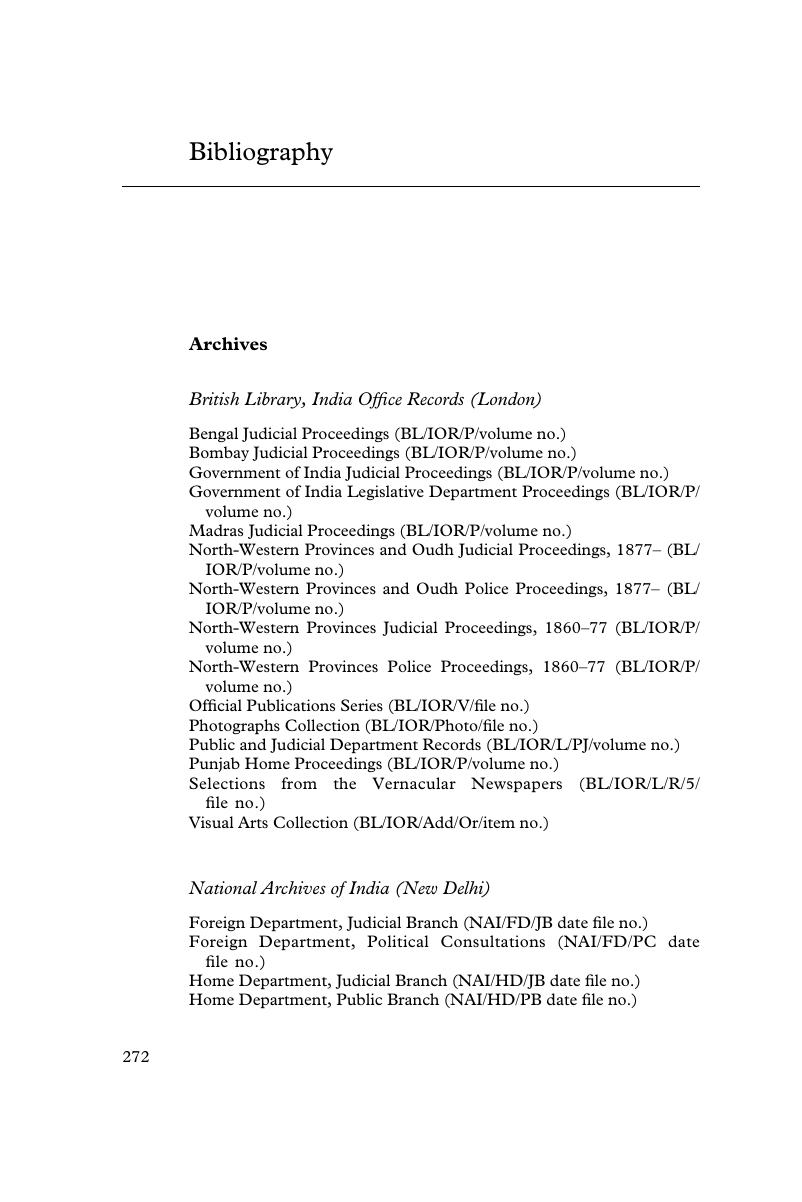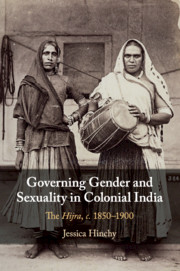Book contents
- Governing Gender and Sexuality in Colonial India
- Governing Gender and Sexuality in Colonial India
- Copyright page
- Dedication
- Contents
- Illustrations
- Glossary
- Abbreviations
- Frontispiece
- Introduction
- Part 1 Solving the ‘Eunuch Problem’
- Part 2 Multiple Narratives of Hijra-hood
- Part 3 Surviving Criminalisation and Elimination
- Conclusion
- Postscript: Hijras and the State in Postcolonial South Asia
- Bibliography
- Index
- References
Bibliography
Published online by Cambridge University Press: 04 April 2019
- Governing Gender and Sexuality in Colonial India
- Governing Gender and Sexuality in Colonial India
- Copyright page
- Dedication
- Contents
- Illustrations
- Glossary
- Abbreviations
- Frontispiece
- Introduction
- Part 1 Solving the ‘Eunuch Problem’
- Part 2 Multiple Narratives of Hijra-hood
- Part 3 Surviving Criminalisation and Elimination
- Conclusion
- Postscript: Hijras and the State in Postcolonial South Asia
- Bibliography
- Index
- References
Summary

- Type
- Chapter
- Information
- Governing Gender and Sexuality in Colonial IndiaThe <I>Hijra</I>, c.1850–1900, pp. 272 - 296Publisher: Cambridge University PressPrint publication year: 2019



